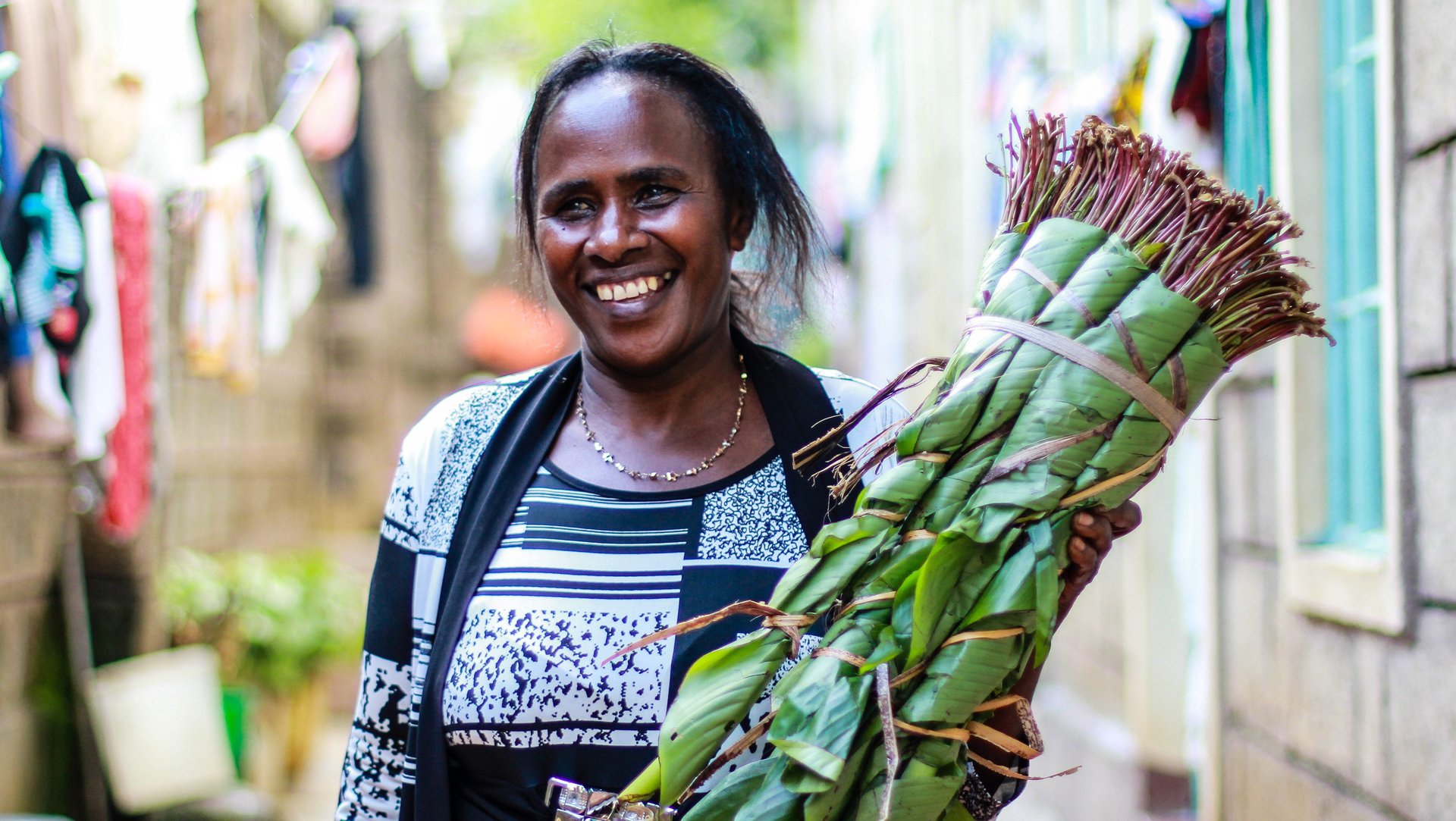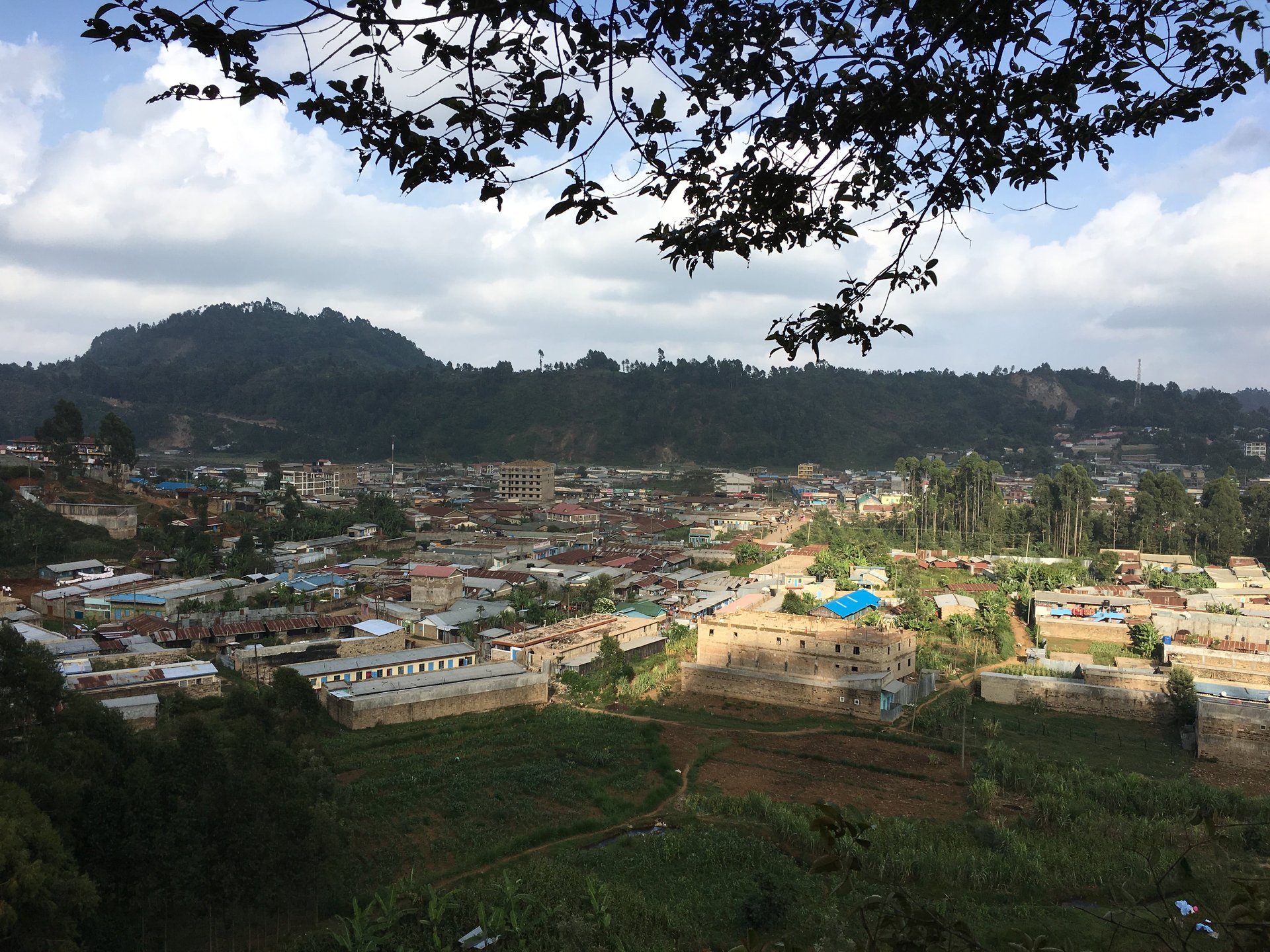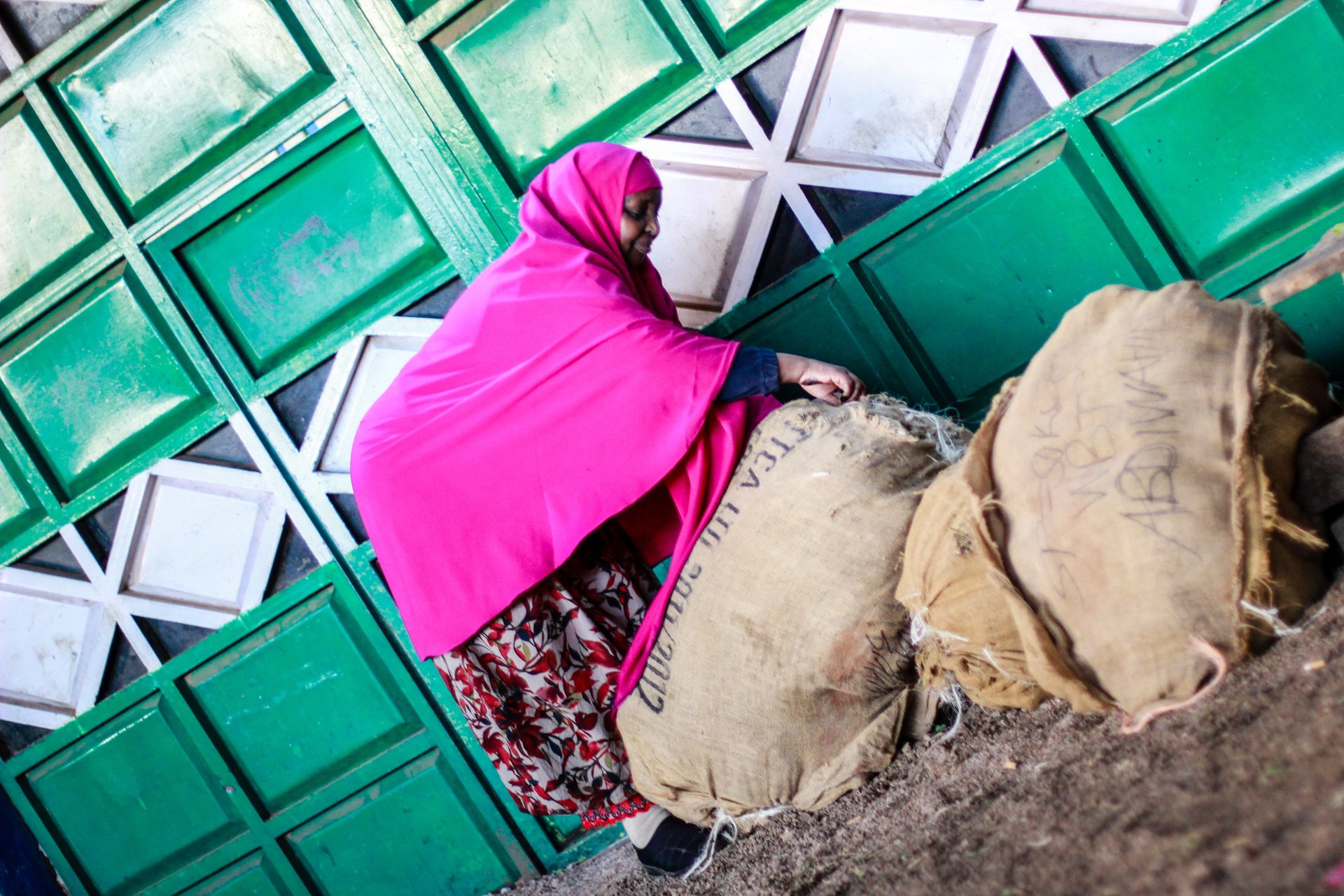East African khat leaf is traded and chewed mostly by men, but it’s a global business because of women
Maua, Kenya


Maua, Kenya
Rose Mugambi Karanja remembers the morning over 20 years ago when she first got into the khat business. Khat, the red-stemmed, green-leafed plant that is chewed for its amphetamine-like properties, was booming in Maua town, which is located in Nyambene Hills in eastern Kenya’s Meru County.
For six months, Karanja woke up very early in the morning to go to work as an apprentice for a trader. There, she saw how the green twigs were cultivated and picked, learned to distinguish the quality of the leaves, and became familiar with how the khat was wrapped and shipped to all corners of the world.
“It really changed my life,” Karanja recalls. Since then, she has been able to invest in property and farms, send her children to school and university, and convinced her husband to join the business, too. “Khat was really profitable. I got in, and never looked back,” she says.
For hundreds of years, khat—also known as miraa in Kenya and chat in Ethiopia—has thrived as a socio-cultural commodity. In the Horn of Africa and the Arabian Peninsula, where khat is grown and traded, it has had the distinct quality of promoting interaction among people from different religions, ethnicities, and race. It has also been associated mostly with the male gender, many of who control the businesses, and who devote hours chewing it (pdf) in both public and private spaces.
But what is mostly overlooked is the role of women in the production and sale of khat. “It tends to be a very strongly gendered commodity,” says Paul Goldsmith, an agronomist and development expert who has done extensive research on khat. But women, Goldsmith says, have thrived on the fringes of the retail trade.
In Maua town, women work in picking the leaves from the farms; collect and sell the banana leaves used to wrap khat in bundles to keep its moisture; knit and prepare the sacks used to transport khat; and act as brokers between farmers and traders who export it worldwide. In Somalia, women have also taken to the khat business despite imprisonment and fines from extremist groups—all to support their families and earn much-needed income in the country’s moribund economy.

Trailblazers
But women were also among the first people to discern how lucrative the khat business can be. Since the 1990s, khat has moved from a social product consumed in the Horn of Africa to a global commodity. Over the decades this was boosted by improvements in infrastructure and modern transportation systems which could deliver it anywhere within a 48-hour period so it remains fresh.

As Oxford professor David Anderson and others outline in their book The Khat Controversy, a businesswoman known as Yasmin was a pioneer of the khat export business. After moving from Somalia to Kenya in the 1970s, she started exporting small quantities of the mild stimulant to the United Kingdom. Because of her enterprising and evident wealth from khat, many Somalis later moved to Meru and joined the business too.
The rising consumption of khat has also increased its reputation as a controversial stimulant—and women have borne the brunt of the backlash that comes with that. Anti-khat activists and religious leaders say that the plant destroys families and that the money spent consuming it could be used for basic needs like food and education. Ardo Omaar, a trader in Maua since 1996, says that some family members scorn her choice of business. “The khat business has been a blessing for us,” she says. “I don’t know why people would look down on these hardworking people.” Despite religious opposition to khat, Muslim traders in the town pulled resources together in the past and built a mosque.
An estimated 500,000 Kenyans depend on khat cultivation and sale for their livelihoods, with Britain importing some $25 million worth of the leaves annually before the 2014 ban. More than 15 cargo planes full of khat also leave Kenya for Somalia daily, with a retail value of $400,000.
Experts have also debated the impact of khat on health and the central nervous system. This has seen countries like the UK banning it, despite an official recommendation from regulatory agencies that it remain legal. The loss of the British market, which consumed between 2,500 to 2,800 tons a year, has left many farmers and traders in Maua with huge losses.
“Since the London ban, some of the women we worked with have completely left the business,” says Charity Gakongu, who wraps khat in banana leaves at the Muringeni market. The slow business, she says, has affected the ability of their cooperative to raise money and engage in other businesses. “People don’t know how to do anything else. Where do you want them to go?”

With sluggish demand, Karanja says some of the women she employed in her farm now walk around town, looking for menial jobs like cleaning homes and washing clothes. The government, she said, should lobby more on behalf of traders; a late February tax increase by the Somali government also led to a four-day halt on trade. And despite raking in hundreds of millions of dollars in revenue, Kenya’s government only categorized khat as a cash crop last year.
“They need to find a way to promote us and get us back into these markets,” Karanja said. “That will make us happy. But our current condition makes me feel sad.”